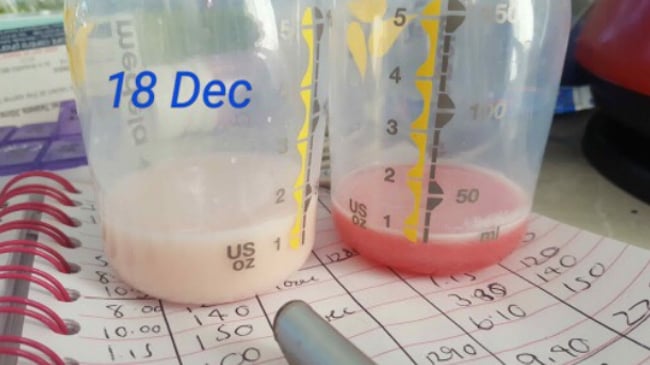WARNING: This post contains graphic content.
Blood is something we are not used to seeing in our expressed bottles of breast milk, so it came as a shock when Australian mum Tanya Knox looked down at her milk.
“It was quite confronting. I could feel mastitis starting to set in and my milk suddenly became really bloody, I had no idea I was passing clots until I strained the milk after pumping. My husband nearly fainted.”
While most of the time we will only see white milk come out of our pumps and nipples, there can be variations in colour including green due to medications or what foods we are eating. Sometimes women will see a light pink colour which is not due to blood but rather beetroot that the mum ate.
And yes, even blood can be in the milk if an infection is present along with puss or clumps of white milk. Tanya had been exclusively pumping and bottle feeding for four months when she noticed the bright red blood.
“I had pumped strawberry coloured milk before in the past but nothing like this, I’d heard of people expressing out clogs and clots but never experienced it until this happened, about four months into my pumping journey.”






